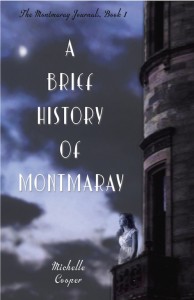The Saturday edition of The Sydney Morning Herald has been running “a series about how to write”, which I have been reading with increasing irritation. First there was Sue Woolfe, who stated that anyone can write a novel, provided they “don’t stick to a subject, a character or, worst of all, a plot”. Her advice is not to read what you’ve written until you have a hundred thousand words “about anything”, whereupon you add “some narrative techniques and suspense” and, voila, “you’ll have the novel you knew you could write”! Oh, and you mustn’t use a computer – that’s death to creativity.
Then there was Debra Adelaide, who insisted on “total extermination” of adverbs. She isn’t keen on adjectives, either – they’re the “cockroaches of prose”.
MERCIFULLY (I intend to saturate this post with adverbs), most of the other articles in this series have been wiped from my memory, but they were EQUALLY ANNOYING.

FORTUNATELY, Gabrielle Carey restored some sanity to the series in today’s Herald by saying:
“There are many things one can get out of a writing class: advice on character, structure, grammar and punctuation. But that leap into the creative realm is something you can only do on your own.”
EXACTLY! She also talks about teaching creative writing to rich, successful adults, who, having achieved all their other goals in life, decide they’re going to bang out a novel:
“They pay exorbitant prices for creative writing classes but by the end they often come up to me and say, ‘Well, it’s been interesting. I’ve learnt a lot. But I’ve realised it’s just too hard. I’m going back to law.'”
It’s true, writing a novel can be hard work. It takes concentration, good language skills, persistence, an ability to exist on limited sleep and funds – plus a mysterious, amorphous element called ‘creativity’. It’s tempting to try to get around all this by persuading an author to surrender what Ms Carey laughingly calls “some secret code or some magic advice”. But I agree with her – there ISN’T a secret code.
Of course, I’ve never actually done a creative writing course, so what would I know? Group instruction for a solitary pursuit like writing just isn’t my thing, but I’m sure some writing courses are great, especially the ones that take place over a long period of time, have a small number of students, focus on a particular type of writing (say, ‘writing a short story’ or ‘writing fiction for children’) and are taught by someone with both writing and teaching expertise. You don’t need to do a creative writing course to become a published novelist, but if you like the sound of a particular course and can afford it, why not?
What I can recommend from personal experience is working with a mentor. A mentorship is for writers who’ve committed themselves to hard work – who’ve sat down and written a draft (or several drafts) of a novel and realised they need help with the next stage. Mentors can give specific advice on your manuscript, once they’ve talked with you about what you want to achieve. Some of them also know agents and publishers, which is useful if you feel your novel is complete and you’d like to try to get it published. Your local writers’ centre may have a mentorship program, and free mentorships are awarded each year by the Australian Society of Authors and the Children’s Book Council of Australia.
Of course, you don’t need a mentor to become a published writer. You don’t need a literary agent, either – at least, you don’t if you live in Australia. But that discussion is probably best left for another post.





